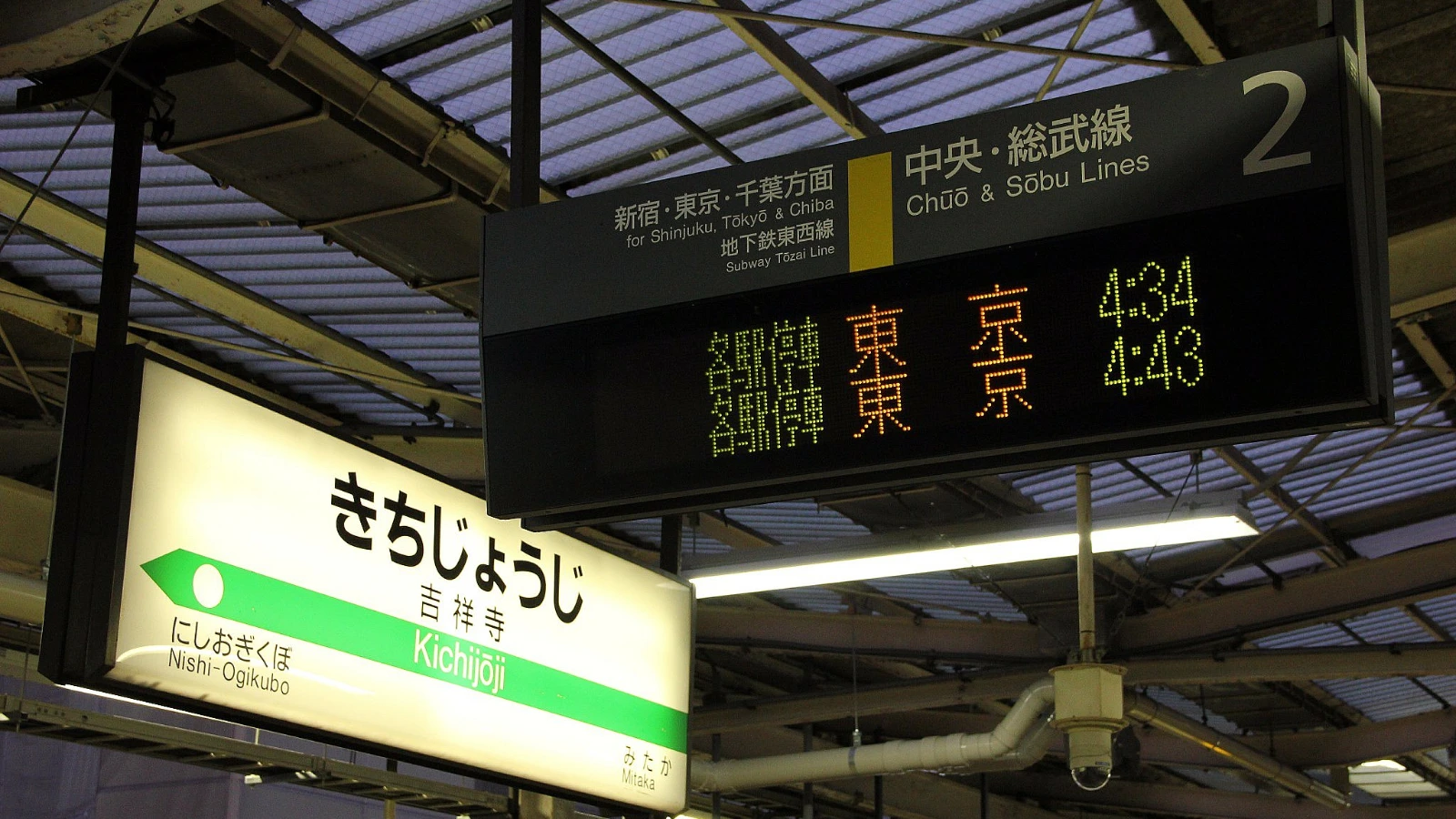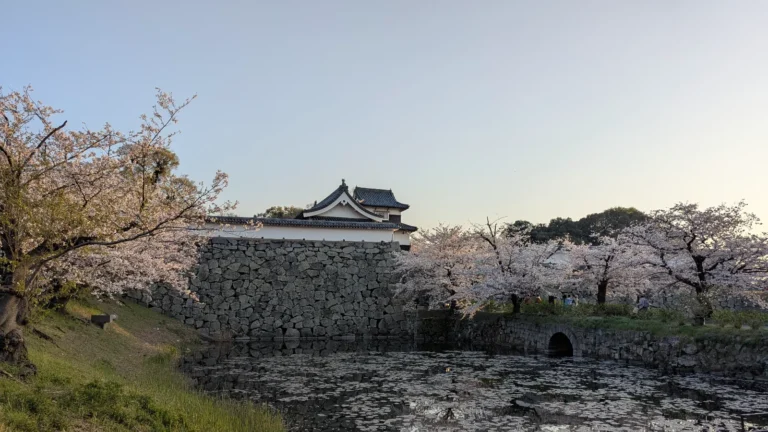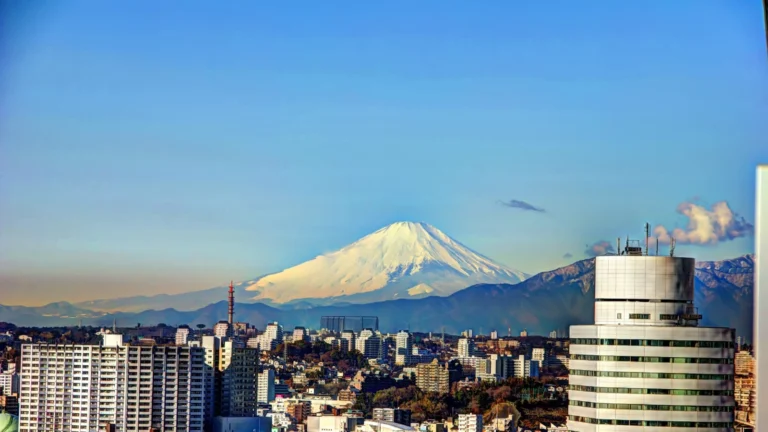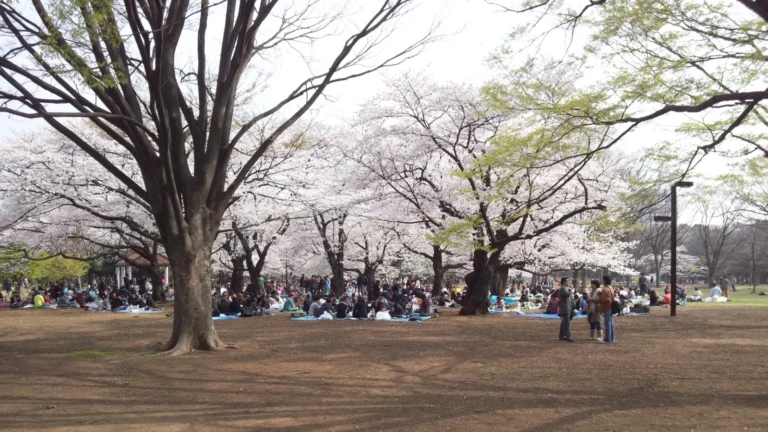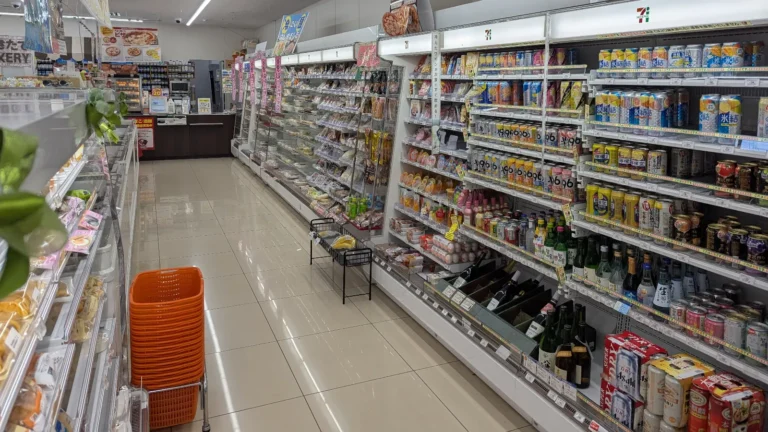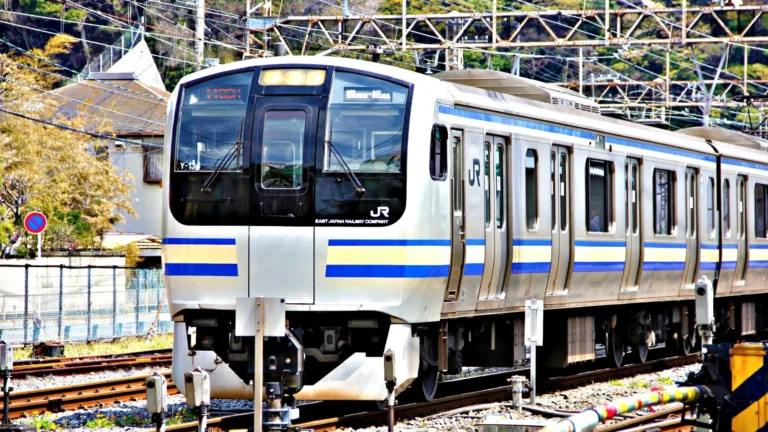Japan Rail Pass: A JOTM Guide
There’s a particular quiet found only on a Japanese train as it slips through a valley at sunrise. Outside, rice paddies blur into blue-grey mountains, and the only sound is the soft chime of arrival and the promise of somewhere new. For many, the Japan Rail Pass (JR Pass) is more than just a train ticket, it’s a way to experience Japan not in haste, but in rhythm. In this guide, we untangle how to use the Japan Rail Pass, consider whether it’s worth it for your journey, and clarify the price and practical details, so you can travel with confidence and intention.
Select links in this guide are affiliate links. They help sustain this space… allowing us to share more, with less dependence on advertising.
*Prices are subject to change.
Japan Rail Pass 2025: Overview, Ticket Types, and Current Prices
- What Is the Japan Rail Pass?
A multi-day, all-you-can-ride ticket for most JR trains, including shinkansen, across Japan. - Who Is Eligible?
Available exclusively to temporary visitors (tourist visa holders). - Types of Passes:
- Ordinary: Comfortable, standard class
- Green Car: Quieter, spacious, first-class-style seats
- Valid for 7, 14, or 21 consecutive days
- Quick Cost Overview (2025):
- Ordinary: From ¥50,000
- Green: From ¥70,000
- Single-city and short trips: Usually not worth the price.
Japan Rail Pass: Ordinary Car
- 7 Days: ¥50,000
- 14 Days: ¥80,000
- 21 Days: ¥100,000
Japan Rail Pass: Green Car
- 7 Days: ¥70,000
- 14 Days: ¥110,000
- 21 Days: ¥140,000
Is the Japan Rail Pass Worth It in 2025?
If you plan long journeys or want true freedom to roam, it often pays for itself, especially if you travel from Tokyo to Kyoto, Hiroshima, or northern Japan.
Why Use the Japan Rail Pass?
- Effortless Movement: Step off a train in Kyoto’s old alleys at breakfast, and again in Kanazawa by dusk, with no need to buy extra tickets.
- Legendary Shinkansen: Experience the comfort and punctuality of Japan’s fastest trains, included in your pass.
- Small Joys and Unplanned Detours: Stop for lunch in a seaside town, follow a whim, and board the next train when you’re ready.
- Financial & Practical Freedom: Unlimited rides mean no second-guessing which ticket to buy, and seat reservations are free on most routes.
- When It Isn’t the Best Choice:
- Sticking to one city or only making a round trip? Individual tickets are often cheaper.
- Want to ride the very fastest Nozomi/Mizuho trains? These are not covered.
Plan every detail smoothly using our Planning a Trip to Japan guide.
How to Buy, Activate, and Use the Japan Rail Pass in 2025
- Where to Buy:
- Book online here
- How to Activate:
- Exchange your voucher at a JR exchange office, often found in airports or big stations.
- Choose your start date (within 30 days).
- Pass is a physical ticket, don’t lose it!
- Booking Seats:
- Reserve seats at ticket offices, machines, or online (for some JR lines).
- Non-reserved cars are available, but busy periods fill quickly.
- Using Gates:
- Show your pass to a staff member at manned gates; some stations now allow automatic entry.
- Apps & Resources:
- Bookmark the JR Pass website and Japan Travel by NAVITIME or Google Maps for real-time train planning.
Move with confidence, see our How to Get Around Japan guide for practical routes and tips.
What the Japan Rail Pass Covers and Doesn’t Cover
- What’s Covered:
- All JR shinkansen (except Nozomi/Mizuho), limited express, rapid, and local trains
- Some JR buses, the Miyajima ferry, and select lines to airports
- Major Cities and Scenic Routes:
- Glide from Tokyo’s neon bustle to the shrines of Kyoto, the coastlines of Kanazawa, or the forests of Tohoku, all on a single pass.
- Take the slow train through the Japan Alps, or the northern lines to Hokkaido’s wide skies.
- Notable Exceptions:
- Nozomi and Mizuho shinkansen (fastest bullet trains)
- Most subways, trams, and private railways
- If the Pass Doesn’t Cover Your Route:
- Buy an extra ticket for private lines or use IC cards (Suica, ICOCA) as needed.
- Can You Ride Nozomi or Mizuho Trains with the Japan Rail Pass?
- The Japan Rail Pass does not cover Nozomi or Mizuho shinkansen, the fastest bullet train services on the Tokaido and Sanyo lines. If you wish to use these trains, you’ll need to purchase a separate “[ONLY WITH JAPAN RAIL PASS] NOZOMI MIZUHO Ticket” at the JR Ticket machine/office after arrival . For most journeys, Hikari, Sakura, and Kodama trains offer comparable routes, just allow a bit of extra time.
Time your travels perfectly with our Best Time to Visit Japan guide.
Regional Japan Rail Passes: When They’re Better Than the National JR Pass
Sometimes the journey is contained within a single region, Kyoto’s temple paths, Hokkaido’s wild north, or the coastlines of Kyushu. For these focused itineraries, regional rail passes offered by each JR Group company can offer more flexibility and better value than the national Japan Rail Pass.
What Are Regional Rail Passes?
Regional rail passes are special tickets valid for unlimited train travel within a specific area of Japan, like Kansai, Tohoku, Hokkaido, or Shikoku. They’re ideal for those planning to explore just one part of the country.
When a Regional Pass Might Be Better
- Focused Itineraries: If you’re traveling mainly within one region, such as Kansai (Osaka, Kyoto, Nara, Hiroshima) or Kanto (Tokyo and day trips), regional passes can be more affordable and easier to use.
- Cost Savings: With the national pass price hike, many regional passes offer significant savings for shorter, more concentrated trips.
- Special Routes: Some regional passes include scenic lines or bonus perks not covered by the national pass, like the Hokuriku Arch Pass, which links Tokyo and Kyoto/Osaka via Kanazawa and Nagano, often at a lower price and with a different view.
JR Pass vs Regional Pass: Which is Better?
- Only staying in one city, or making just a quick round-trip?
- Individual tickets or IC cards are usually best.
- Are you traveling across multiple, distant regions (e.g., Tokyo to Hokkaido, then to Kyushu)?
- The national Japan Rail Pass is likely the best value.
- Is your travel mostly within one or two adjacent regions?
- Research specific regional passes, they’re often more cost-effective and flexible.
Best Japan Regional Rail Passes in 2025: Kansai, Tohoku, Kyushu & More
Unlock more ways to save with our Essential Tips for Traveling Japan on a Budget guide.
Local Secrets from JOTM
- Start Early, Drift Late: The first and last trains are often the quietest; sunrise departures offer near-empty platforms and peaceful views.
- Take the Local: Step off the express and try a local line, rural routes like the Gono Line or Tadami Line reveal hidden landscapes and small stations where time slows.
- Ekiben Ritual: Don’t miss a station bento, each region has its signature, perfect for savoring scenery through the window.
- Scenic Slices: Try the seaside Ishizuchi or coastal Nichinan lines for ocean views that most tourists skip.
- A Green Car Splurge: For a special journey (especially during peak travel), upgrade to Green for silence and extra space, it’s a subtle luxury worth considering on busy days.
Compare culture, food, and pace in our Tokyo, Kyoto, or Osaka Comparison guide.
FAQs about the Japan Rail Pass: A Few Last Things Before You Go
Explore answers to the most common questions about the Japan Rail Pass, from eligibility and prices to coverage and practical travel tips.
A: No, you only need a Japan Rail Pass if you plan extensive long-distance, multi-city train travel across Japan. For shorter trips within a single region or city, individual tickets or regional rail passes often offer better value.
A: The Japan Rail Pass is generally not worth it for a short trip focusing on one city or a limited region. It’s usually only cost-effective for journeys covering multiple regions with frequent long-distance train travel; otherwise, single tickets or regional passes may be cheaper.
A: Yes, the Japan Rail Pass covers airport transfers on JR-operated lines such as the Narita Express (N’EX) to/from Narita Airport and the Haruka Express to/from Kansai International Airport (KIX). It does not cover non-JR airport trains like the Keisei Skyliner or Nankai Rapi:t.
A: Japan Rail Pass Green Cars (first-class) offer significantly more spacious seats, extra legroom, wider seat pitch (often 2+2 per row vs. 2+3), and a generally quieter, more luxurious environment. Ordinary Cars (standard class) are still very comfortable with good legroom and reclining seats, but they are typically busier and have a denser seating arrangement. All Green Car seats require a reservation.
A: You can make Japan Rail Pass seat reservations for free at JR ticket offices (Midori-no-Madoguchi) or reserved seat ticket machines located at most JR stations in Japan. For passes purchased online directly from JR, you can also make reservations online via their dedicated booking website before arriving in Japan. It’s recommended to reserve seats for Shinkansen and limited express trains, especially during peak times.
A: No, the Japan Rail Pass is generally not valid on non-JR trains or city subways and trams. It is exclusively for trains, some buses, and ferries operated by the Japan Railways (JR) Group. For travel on private railway lines, subways, or trams within cities (like the Tokyo Metro or Osaka Metro), you will need to purchase separate tickets or use an IC card (e.g., Suica or ICOCA).
A: Yes, you can get a refund for your Japan Rail Pass voucher before activation in Japan, typically with a handling fee deducted. Any changes, such as the start date or pass duration, must also be made before activation. Once the pass is activated, it cannot be altered or refunded.
A: Generally no, the Japan Rail Pass does not cover most overnight sleeper trains. While some exceptions may exist, additional fees for sleeping accommodations typically apply, even with a valid pass.
A: If you miss your Japan Rail Pass reserved train, your specific seat reservation becomes void. However, you can typically board the next available train on the same route and day using a non-reserved car if one is available. Alternatively, you can go to a JR ticket office or reservation machine to make a new, free reservation for a later train. There are no penalties for missing a reservation.
A: Yes, at major stations and airports—but buying ahead online is often cheaper and more convenient.
A: No, for most foreign tourists, the national Japan Rail Pass can no longer be purchased after arriving in Japan at major stations or airports. As of September 2023, the national JR Pass must be purchased online (via the official website or authorized agents) before you arrive in Japan. Once purchased, you will receive an exchange order or confirmation, which you then exchange for your physical pass at designated JR exchange offices (found at airports and major stations) upon arrival. Buying online often also allows for early online seat reservations.
A: As of 2025, a 7-day Ordinary Japan Rail Pass costs around ¥50,000, with longer durations and Green Car options available. The price includes shinkansen travel, except for Nozomi and Mizuho services.
A: The Japan Rail Pass is worth it if you plan to travel long distances or visit multiple regions. For single-city trips, individual tickets may be cheaper.
A: To use the Japan Rail Pass, activate it at a JR exchange office, then show it at station gates or reserve seats for shinkansen and limited express trains. Simply present your pass when entering or exiting JR train areas.
A: You must purchase the national Japan Rail Pass online from the official JR Pass website or authorized travel agencies before you arrive in Japan. While you exchange your voucher for the physical pass at major JR stations and airports in Japan, the pass itself can no longer be bought there for most foreign tourists as of September 2023.
A: Yes, the Japan Rail Pass covers most shinkansen (bullet trains) except the fastest Nozomi and Mizuho services. Use Hikari, Sakura, or other eligible trains with your pass.
A: No, the national Japan Rail Pass does not cover Nozomi or Mizuho shinkansen services. However, Japan Rail Pass holders can now ride Nozomi and Mizuho trains by purchasing a special additional “NOZOMI MIZUHO Ticket.” This supplement allows you to use these faster services, offering more flexibility. Otherwise, you should use Hikari, Sakura, or Kodama trains, which are fully covered by your pass and follow similar routes, just with more stops.
A: No, the Japan Rail Pass does not cover Tokyo subway lines. It is valid only on JR-operated lines, including the Yamanote Line and select local JR routes.
A: Yes, the Japan Rail Pass is available only to foreign tourists visiting Japan on a temporary visitor visa. Japanese residents are not eligible.
A: To pick up your Japan Rail Pass, exchange your voucher or show your confirmation at a designated JR exchange office in Japan, usually found in airports and major train stations.

